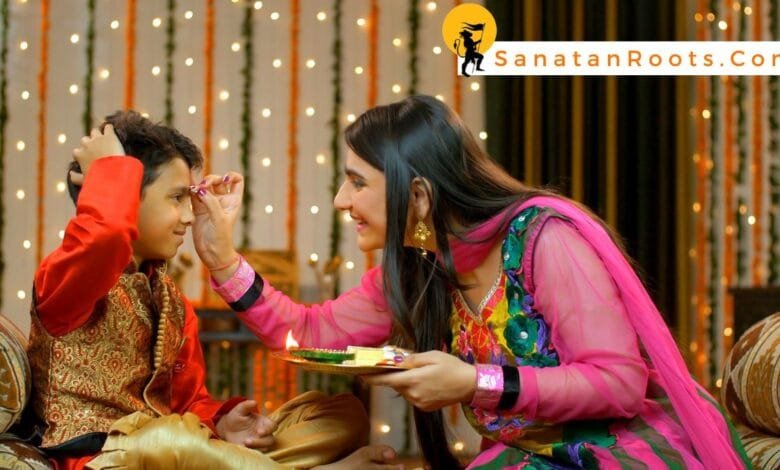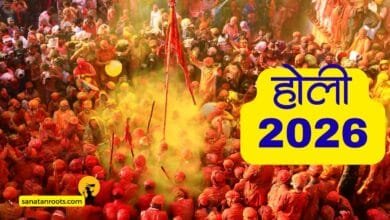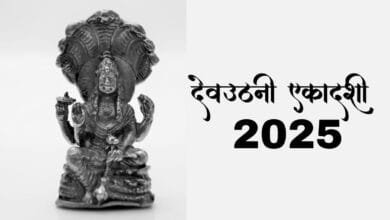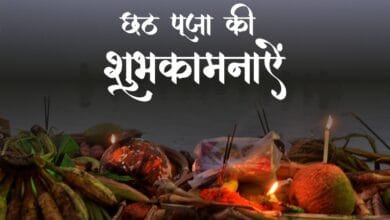Bhai Dooj 2025: Celebrating the Sacred Bond Between Brothers and Sisters

As the vibrant Diwali festivities draw to a close, one final celebration awaits on Thursday, October 23, 2025—Bhai Dooj, the heartwarming festival that honors the eternal bond between siblings. This beautiful tradition brings families together in a celebration of love, protection, and the unbreakable ties that bind brothers and sisters.
Whether you call it Bhai Dooj, Bhau Beej, Bhai Tika, or Yama Dwitiya, this festival represents one of the most cherished relationships in life. Let’s explore everything you need to know about Bhai Dooj 2025—from auspicious timings to traditional rituals and the beautiful mythology behind this special day.
When is Bhai Dooj 2025?
Bhai Dooj 2025 falls on Thursday, October 23, marking the fifth and final day of the Diwali festival celebrations. The festival is based on the Dwitiya Tithi (second lunar day) of the Shukla Paksha in the Hindu month of Kartik, which comes just two days after the main Diwali day.
Auspicious Timing for 2025
Timing is crucial for performing the Bhai Dooj rituals properly. Here are the important timings for 2025:
Bhai Dooj Aparahna Muhurat: 12:34 PM to 2:51 PM (Duration: 2 Hours 17 Minutes)
Dwitiya Tithi:
- Begins: 8:16 PM on October 22, 2025
- Ends: 10:46 PM on October 23, 2025
The Aparahna period (afternoon time) is considered the most auspicious for the tilak ceremony, as this is when sisters traditionally perform the rituals for their brothers’ well-being and longevity.
What is Bhai Dooj?
The name “Bhai Dooj” comes from two words: “Bhai,” meaning brother, and “Dooj,” referring to the second day after the new moon in the Hindu lunar calendar. This festival celebrates the unique and precious relationship between brothers and sisters, emphasizing mutual love, care, and protection.
Unlike Raksha Bandhan, which takes place during the monsoon season and involves tying a sacred thread (rakhi), Bhai Dooj is celebrated as part of the Diwali festivities and centers around the tilak ceremony—a ritual where sisters apply a ceremonial mark on their brothers’ foreheads while praying for their prosperity and long life.
The Mythological Origins of Bhai Dooj
Bhai Dooj has deep roots in Hindu mythology, with two popular legends explaining its origin:
The Story of Yama and Yamuna
One popular legend speaks of Goddess Yamuna inviting her brother Yamraj (the God of Death) to her home, performing tilak and aarti to pray for his long life. Moved by her devotion, Yamraj blessed all brothers who receive tilak from their sisters on this day, promising their protection and longevity.
According to this tale, Yamraj was so touched by his sister’s love and hospitality that he granted her a boon—any brother who visits his sister on this day and receives her blessings will be blessed with a long and prosperous life. This is why Bhai Dooj is also known as “Yama Dwitiya.”
Lord Krishna and Subhadra
Another story connects Bhai Dooj to Lord Krishna and his sister Subhadra. After Krishna’s victory over the demon Narakasura, Subhadra welcomed him home with ceremonial tilak and sweets. This event symbolizes the affectionate bond and mutual care siblings share.
Subhadra gave Krishna a warm welcome with sweets and flowers and affectionately adorned a tilak on Krishna’s forehead with due respect and love. This joyous reunion after a victorious battle became the foundation for the Bhai Dooj celebrations we observe today.
The Significance of Bhai Dooj
Strengthening Family Bonds
In our fast-paced modern world, Bhai Dooj provides a precious opportunity for siblings to reconnect, regardless of geographical distances. The festival emphasizes the importance of family ties and creates lasting memories through shared traditions and rituals.
Spiritual Protection
The tilak ceremony is not merely symbolic—it’s believed to invoke divine protection for brothers. The vermillion and rice paste applied on the forehead is thought to create a protective shield, warding off evil and negative energies while blessing brothers with long life and prosperity.
Complementing Raksha Bandhan
While Raksha Bandhan focuses on the brother’s promise to protect his sister, Bhai Dooj highlights the sister’s prayers and blessings for her brother’s well-being. Together, these festivals create a beautiful balance, celebrating the reciprocal nature of sibling relationships.
Cultural Continuity
By observing Bhai Dooj, families pass down traditions from one generation to the next, preserving cultural heritage and teaching children about the importance of family values, respect, and love.
Traditional Bhai Dooj Rituals and Puja Vidhi
The celebration of Bhai Dooj follows a specific sequence of rituals that have been practiced for centuries. Here’s a step-by-step guide:
Preparation
All Bhai Dooj rituals and pooja are performed in the common puja room or on the same pedestal that was adorned for the Diwali puja. Sisters prepare a special thali (plate) containing:
- Kumkum (vermillion)
- Rice grains (akshata)
- Sandalwood paste
- Fresh flowers
- Sweets (especially laddoos, barfi, and traditional delicacies)
- Coconut
- Betel leaves and nuts
- A diya (oil lamp)
- Incense sticks
The Tilak Ceremony
- Welcome: The brother visits his sister’s home, where she welcomes him with aarti at the entrance.
- Seating: The brother is seated on a special seat or mat prepared for the occasion.
- Applying Tilak: Sisters apply a ceremonial tilak made of kumkum (vermillion), rice, and sometimes sandalwood paste on their brothers’ foreheads. This ritual is a prayer for their brothers’ long life, well-being, and protection from harm.
- Aarti: Sisters perform aarti with a ghee diya (lamp), circling the lit lamp around the brother’s face while singing traditional songs.
- Offering Sweets: Sisters offer sweets such as barfi, laddoo, and kheer, along with fruits and dry fruits. The sister personally feeds the first bite to her brother.
- Prayers: The sister prays to the gods for her brother’s health, happiness, prosperity, and long life.
The Exchange
Brothers reciprocate by presenting gifts, money, or tokens of love, promising lifelong care and protection for their sisters. This exchange symbolizes the mutual respect and affection between siblings.
The Feast
After the rituals, families come together for a special meal featuring the brother’s favorite dishes, continuing the celebration with food, laughter, and quality time together.
Regional Variations of Bhai Dooj
India’s cultural diversity means Bhai Dooj is celebrated with unique regional flavors:
North India
Sisters apply tilak, perform aarti, and feed their brothers with delicacies, while brothers give gifts in return. The celebration is grand and festive, often involving extended family gatherings.
Maharashtra and Goa (Bhau Beej)
Known as Bhau Beej, the rituals are similar, with Marathi cultural nuances. The coconut holds special significance, and traditional Maharashtrian sweets like puran poli are prepared.
Bengal (Bhai Phonta)
In Bengal, sisters fast until they perform the phonta (tilak) ceremony. They apply a special paste made from sandalwood and use durva grass as part of the ritual.
Nepal (Bhai Tika)
The Nepali version includes an elaborate seven-color tilak and is one of the most important festivals in Nepal, celebrated with great enthusiasm.
Gujarat
Known as Bhai Beej, the celebration includes the preparation of special dishes and the exchange of elaborate gifts between siblings.
Modern Celebrations: Adapting Traditions
Virtual Celebrations
With families often separated by continents, technology has become a bridge. Many siblings now perform virtual tilak ceremonies via video calls, maintaining the tradition despite physical distance.
Eco-Friendly Approach
Modern celebrations increasingly emphasize sustainability—using natural colors for tilak, avoiding plastic decorations, and choosing eco-friendly gifts.
Inclusive Celebrations
The spirit of Bhai Dooj has expanded beyond blood relations. Many people now celebrate with cousin-brothers/sisters, close friends who are like siblings, and even colleagues, spreading the message of care and protection more widely.
Gift Ideas for Bhai Dooj 2025
For Brothers
- Traditional sweets and dry fruits
- Personalized accessories (watches, wallets, cufflinks)
- Gadgets and electronics
- Clothing and fashion items
- Books or subscriptions
- Experience gifts (concert tickets, adventure activities)
- Health and fitness products
For Sisters
- Jewelry (traditional or contemporary)
- Designer clothing or accessories
- Beauty and skincare products
- Home décor items
- Personalized gifts (photo frames, custom jewelry)
- Gift vouchers
- Flowers and chocolates
Meaningful Alternatives
- Charitable donations in their name
- Plants or eco-friendly gifts
- Handmade items
- Quality time together
- Family experiences
Bhai Dooj vs. Raksha Bandhan: Understanding the Difference
While both festivals celebrate sibling relationships, they have distinct characteristics:
Timing:
- Raksha Bandhan: August (Shravan month)
- Bhai Dooj: October/November (Kartik month, after Diwali)
Central Ritual:
- Raksha Bandhan: Sister ties a rakhi on brother’s wrist
- Bhai Dooj: Sister applies tilak on brother’s forehead
Focus:
- Raksha Bandhan: Brother’s promise to protect sister
- Bhai Dooj: Sister’s prayers for brother’s well-being
Context:
- Raksha Bandhan: Standalone festival
- Bhai Dooj: Part of Diwali celebrations
Both festivals complement each other, creating a complete celebration of the sibling relationship throughout the year.
Preparing for Bhai Dooj 2025: A Checklist
One Week Before:
- Confirm celebration plans with siblings
- Order or purchase gifts
- Plan the menu for the feast
- Clean and decorate the puja area
Two Days Before:
- Shop for puja essentials (kumkum, rice, flowers, coconut)
- Prepare or order sweets
- Buy new clothes if desired
- Arrange travel if visiting siblings
On Bhai Dooj Day:
- Wake up early and complete household preparations
- Set up the puja thali beautifully
- Dress in festive attire
- Perform the ceremony during the auspicious muhurat
- Enjoy quality time with family
- Share photos and wishes on social media
The Deeper Meaning of Bhai Dooj
Beyond the rituals and celebrations, Bhai Dooj carries profound significance:
Gratitude: It’s a day to express gratitude for having a sibling who has been there through life’s ups and downs.
Renewal of Bonds: Like any relationship, sibling bonds need nurturing. Bhai Dooj provides an annual opportunity to strengthen these ties.
Cultural Identity: Celebrating Bhai Dooj helps maintain connection with cultural roots, especially important for diaspora communities.
Life Lessons: The festival teaches children about family values, reciprocity, and the importance of relationships beyond material exchanges.
Emotional Well-being: Having strong family bonds contributes significantly to mental and emotional health, and Bhai Dooj reinforces these connections.
Messages and Wishes for Bhai Dooj 2025
Share these heartfelt messages with your siblings:
“On this Bhai Dooj, I pray for your health, happiness, and success. Thank you for being my constant support and my best friend. Happy Bhai Dooj 2025!”
“Distance may separate us, but our bond remains unbreakable. Sending you all my love and blessings this Bhai Dooj. May you always shine bright!”
“To the best brother/sister in the world, Happy Bhai Dooj! May our bond continue to grow stronger with each passing year.”
Conclusion: Celebrating Love Beyond Ritual
Bhai Dooj 2025 on Thursday, October 23 promises to be a joyous occasion filled with heartfelt rituals and family togetherness. As sisters apply tilak and pray for their brothers’ welfare and brothers reciprocate with gifts and promises of protection, the festival beautifully celebrates the enduring love that only siblings share.
Whether you’re celebrating in person or virtually, with traditional rituals or modern adaptations, the essence of Bhai Dooj remains unchanged—it’s about honoring the irreplaceable bond between siblings. In a world that often feels disconnected, festivals like Bhai Dooj remind us of what truly matters: family, love, and the people who know us best.
So mark your calendars, prepare your puja thalis, and get ready to celebrate the beautiful relationship you share with your siblings. After all, brothers and sisters are the only people who journey with you from childhood through old age, sharing your history and shaping your future.
Happy Bhai Dooj 2025! May the bond between siblings continue to flourish and bring joy, protection, and prosperity to all.
Have you started planning your Bhai Dooj celebrations? What are your favorite traditions? Share your thoughts and memories in the comments below!
Discover more from Sanatan Roots
Subscribe to get the latest posts sent to your email.




One Comment